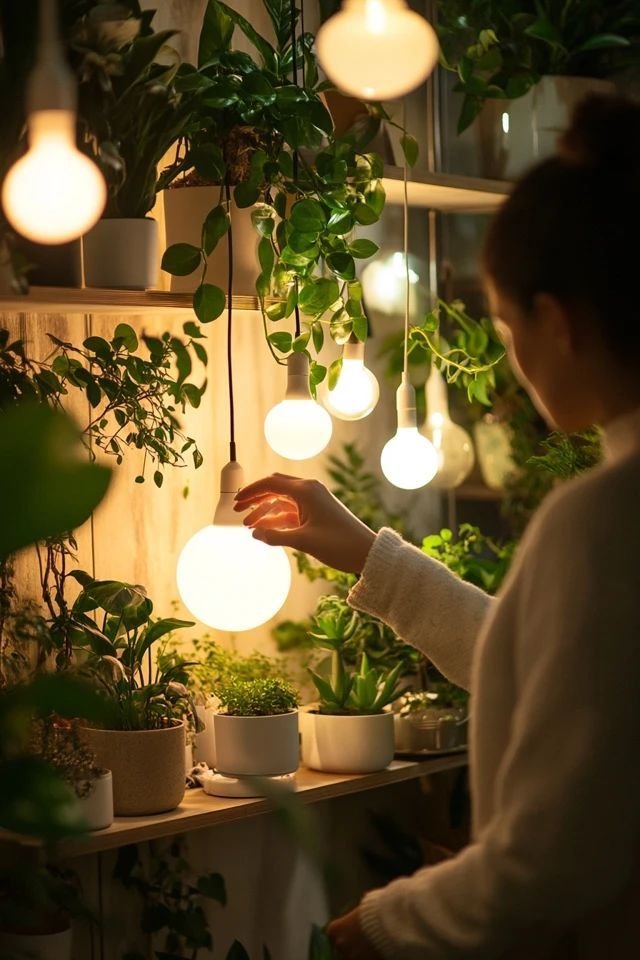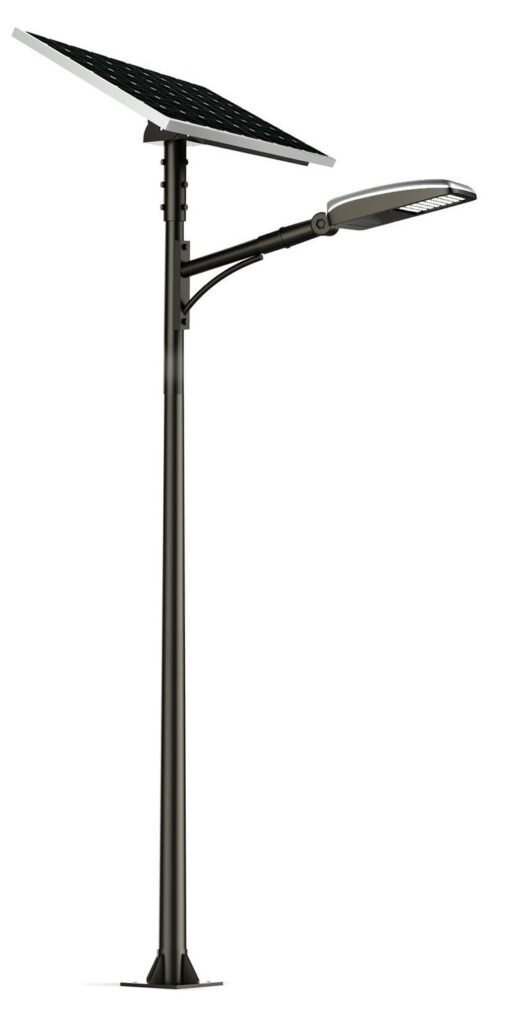10 Eco-Friendly Lighting Solutions: Bright Ideas for a Sustainable Home

Introduction
Lighting is an essential part of every home, but traditional lighting solutions often come with hidden environmental and financial costs. The energy consumed by incandescent bulbs, for example, contributes to greenhouse gas emissions and inflates electricity bills. Fortunately, eco-friendly lighting options are transforming the way we illuminate our homes, combining efficiency, sustainability, and style.
From energy-saving LED bulbs to innovative solar-powered fixtures, these sustainable solutions not only reduce your carbon footprint but also enhance the ambiance of your space. In this post, we’ll shed light on why sustainable lighting matters, the best options available today, and how to implement them seamlessly into your home design. Let’s brighten up your home while keeping the planet’s future in mind.

10 Eco-Friendly Lighting Solutions
1. Switch to LED Bulbs
LED (Light Emitting Diode) bulbs are the gold standard for energy efficiency. They consume up to 80% less energy than traditional incandescent bulbs and last significantly longer. With a variety of colors and designs available, they can suit any home aesthetic. The reduced heat emission of LEDs also makes them safer and more sustainable.
Understanding the Technology
LEDs use semiconductors to convert electricity into light. Unlike incandescent bulbs that lose most energy as heat, LEDs are designed for optimal efficiency. Modern advancements have also led to dimmable LEDs, enabling users to customize their lighting experience.
Choosing the Right LED Bulb
When shopping for LED bulbs, pay attention to lumens (brightness), color temperature, and energy rating. Warm lights are perfect for cozy spaces like bedrooms, while cooler tones work well in kitchens and workspaces. Additionally, ensure compatibility with existing fixtures to avoid issues.
2. Embrace Solar-Powered Lights
Solar-powered lights harness energy from the sun, providing a renewable and cost-effective solution for outdoor lighting. These lights are equipped with solar panels that store energy during the day and illuminate spaces like gardens, patios, and walkways at night.
Advantages of Solar Lighting
Solar lights operate independently of the grid, meaning they don’t increase your electricity bills. They are also highly versatile, with designs ranging from simple path lights to decorative string lights. Plus, installation is hassle-free since they don’t require wiring.
Overcoming Limitations
One challenge of solar lighting is dependency on sunlight. To maximize efficiency, position solar panels in areas with optimal exposure. Many solar lights now include battery backup systems to ensure functionality during cloudy days or extended periods of low sunlight.

3. Install Dimmer Switches
Dimmer switches allow you to adjust the brightness of your lights according to your needs. This not only enhances ambiance but also reduces energy consumption when full brightness is unnecessary.
Benefits of Dimmer Switches
By extending the life of your bulbs and cutting down on energy use, dimmer switches contribute to both cost savings and environmental benefits. They are especially useful in spaces where lighting requirements vary, such as living rooms or dining areas.
Installation and Compatibility
Most dimmer switches are compatible with LEDs and CFLs, but it’s crucial to check product specifications. Professional installation ensures safety and optimal performance.
4. Use Smart Lighting Systems
Smart lighting systems integrate technology with sustainability, enabling you to control lights remotely using apps or voice commands. Features like scheduling and motion detection ensure lights are used only when necessary.
Key Features
Smart systems often include adjustable brightness, color-changing capabilities, and energy monitoring. Popular platforms like Philips Hue and LIFX offer eco-friendly options with seamless integration into smart home ecosystems.
Environmental Impact
By automating lighting, smart systems reduce unnecessary usage and promote efficient energy consumption. Over time, these savings contribute to a smaller carbon footprint.
5. Opt for CFL Bulbs
Compact Fluorescent Lamps (CFLs) are an energy-efficient alternative to traditional incandescent bulbs. Though not as efficient as LEDs, CFLs still use significantly less energy and last longer.
Choosing Between LEDs and CFLs
While LEDs are more advanced, CFLs remain a viable option for those on a budget. Their affordability and availability make them accessible, though they contain small amounts of mercury and require proper disposal.
6. Incorporate Natural Light
Maximizing natural light reduces reliance on artificial lighting. Strategic design choices can transform your home into a well-lit, eco-friendly space.
Architectural Tips
Large windows, skylights, and open floor plans enhance natural light penetration. Light-colored walls and reflective surfaces amplify daylight, reducing the need for electrical lighting during the day.
Benefits Beyond Lighting
Natural light improves mood, productivity, and overall well-being. It also lowers heating costs in winter by providing passive solar warmth.
7. Choose Lights with Motion Sensors
Motion-sensor lights are an excellent solution for energy conservation. These lights automatically turn on when movement is detected and switch off after a set period of inactivity.
Applications
Motion sensors are ideal for hallways, garages, and outdoor spaces. By eliminating the need for manual operation, they prevent energy waste and enhance security.
Advanced Features
Modern motion-sensor lights include adjustable sensitivity and timer settings, making them versatile for various applications.
8. Upcycle for Unique Lighting
Repurposing old items into light fixtures is a creative way to practice sustainability. This approach reduces waste while adding a personal touch to your home decor.
DIY Ideas
Turn mason jars into pendant lights, convert wine bottles into table lamps, or use driftwood for rustic chandeliers. The possibilities are endless and allow for unique, eco-friendly designs.
Environmental Benefits
Upcycling reduces landfill waste and minimizes the demand for new materials. It’s a fun, rewarding project that aligns with sustainable living principles.
9. Adopt Low-Voltage Lighting
Low-voltage lighting systems are commonly used in landscaping but are also suitable for indoor use. They consume less energy while providing ample illumination.
Benefits
Low-voltage lights are safe, energy-efficient, and easy to install. They are particularly effective for accent lighting, creating cozy and inviting atmospheres.
Implementation Tips
Combine low-voltage systems with timers or smart controls to maximize efficiency and convenience.
10. Invest in Rechargeable Lights
Rechargeable lights, such as portable lanterns or desk lamps, offer sustainable lighting solutions for various settings. They can be charged via USB or solar power.
Versatility
Rechargeable lights are perfect for power outages, camping, or as supplemental lighting. Their portability ensures functionality wherever needed.
Eco-Friendly Advantages
By reducing reliance on disposable batteries and grid electricity, rechargeable lights contribute to a more sustainable lifestyle.
Conclusion
Lighting your home sustainably is no longer a challenge but an exciting opportunity to embrace eco-friendly solutions that benefit both the environment and your wallet. From energy-efficient LEDs to the charm of upcycled fixtures, the choices are vast and versatile. By prioritizing these options, you’re not just reducing energy consumption but also paving the way for a greener and brighter future.
Remember, every small change adds up. Whether you start by replacing a single bulb or overhaul your entire lighting system, the impact is significant. Let your home shine responsibly and inspire others to follow suit. Together, we can make sustainable living a norm rather than an exception.





3 Comments